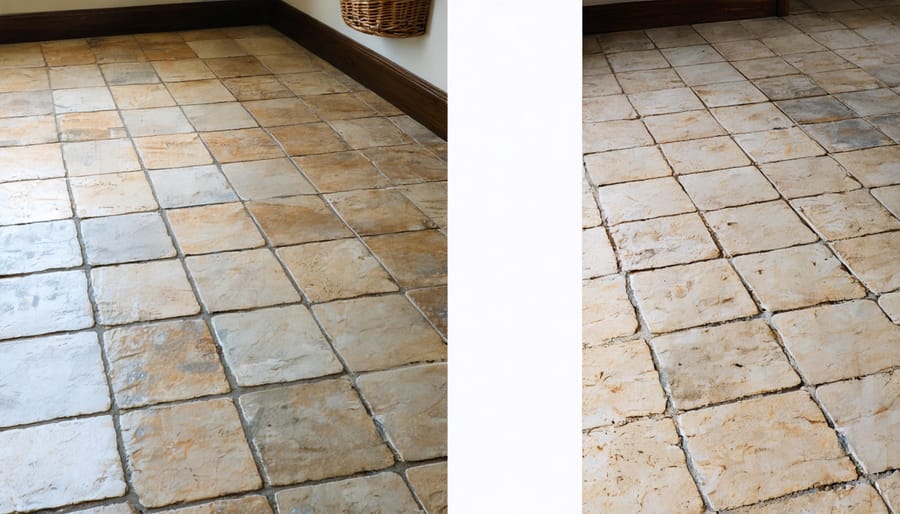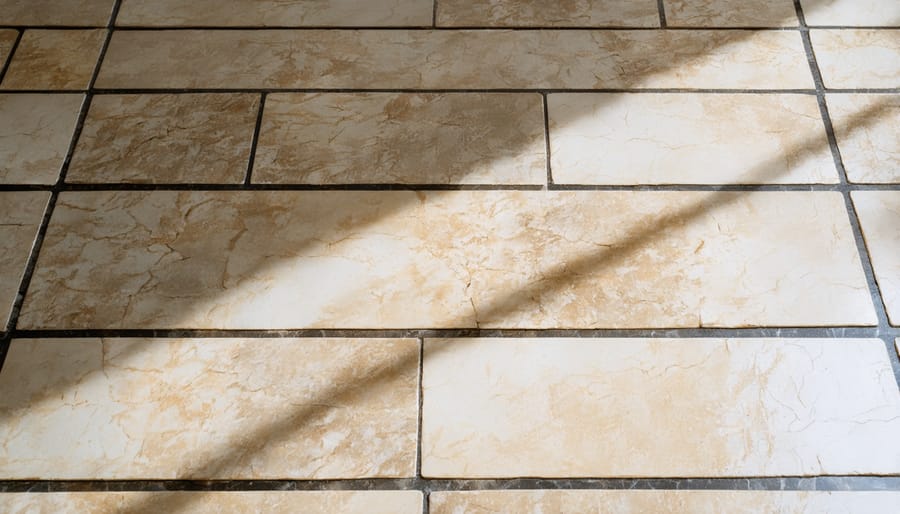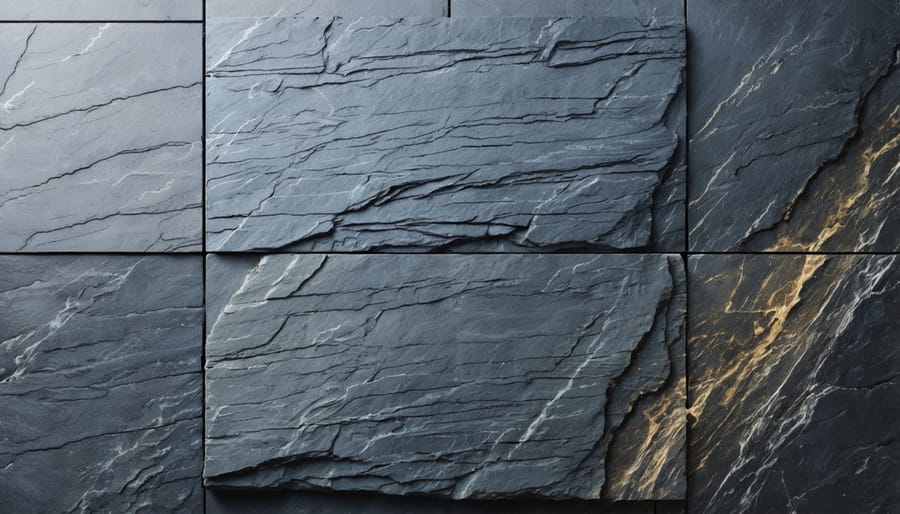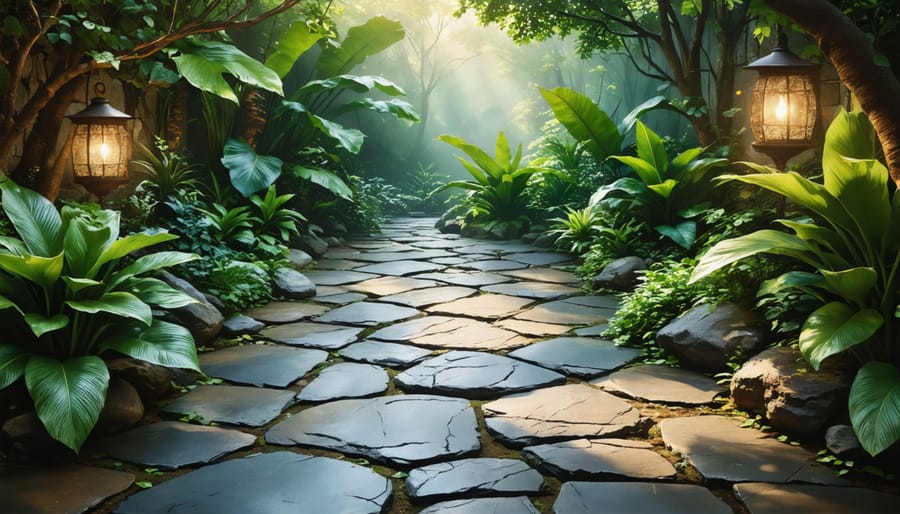Preserve living stones’ unique beauty by mastering essential natural stone care techniques. Position these remarkable succulents in bright, indirect sunlight with 4-5 hours of morning sun exposure. Water sparingly only when the soil is completely dry, typically every 2-4 weeks during growing season and even less frequently during winter dormancy. Plant in fast-draining mineral soil mixed with 80% inorganic materials like pumice and coarse sand, maintaining temperatures between 65-80°F (18-27°C). Remove old, split leaves promptly and inspect monthly for signs of rot or pests. During active growth periods in spring and fall, apply a diluted cactus fertilizer at quarter strength to support healthy development without compromising the plant’s natural growth pattern.

Daily Living Stone Care Essentials
Gentle Cleaning Techniques
Regular cleaning is essential for maintaining the beauty and longevity of your living stones. Start by using a soft, lint-free microfiber cloth or gentle brush to remove loose dust and debris. For daily cleaning, simply wipe the stone surface with a cloth dampened with clean, lukewarm water. Avoid using harsh scrubbing motions that could scratch or damage the stone’s surface.
If deeper cleaning is needed, use a pH-neutral stone cleaner specifically formulated for natural stone. Apply the cleaner sparingly using soft, circular motions, and immediately rinse with clean water. Never use acidic cleaners, vinegar, or abrasive materials, as these can etch or scratch the stone’s surface.
For stubborn spots, create a paste using baking soda and water. Apply it gently to the affected area, let it sit for a few minutes, then wipe clean with a damp cloth. Always test cleaning products on a small, inconspicuous area first to ensure they won’t damage your living stone.
Preventing Surface Damage
To safeguard your living stones from surface damage, implement protective measures during both daily use and maintenance. Place felt pads under any decorative items or containers that come in contact with the stone surface. When moving objects, always lift rather than drag them across the stone. For more detailed guidance on stone protection, refer to our comprehensive natural stone flooring guide.
Use soft, non-abrasive materials for cleaning and avoid metal scrapers or rough brushes that can scratch the surface. Keep the stone away from areas where it might be exposed to falling objects or heavy foot traffic. Consider applying a high-quality stone sealer annually to create an additional protective barrier against scratches and wear. In high-traffic areas, using protective mats or runners can help minimize surface abrasion while maintaining the stone’s natural beauty.
Always address spills immediately using appropriate cleaning methods to prevent etching or staining that could compromise the stone’s surface integrity.
Deep Cleaning Your Living Stone
Safe Cleaning Products
When cleaning living stones, it’s crucial to use gentle, non-abrasive products that won’t damage the stone’s surface or compromise its natural beauty. A mixture of warm water and pH-neutral stone soap is ideal for routine cleaning. Avoid acidic cleaners, including vinegar or citrus-based solutions, as these can etch the stone’s surface and cause permanent damage.
For deeper cleaning, use a specially formulated stone cleaner from reputable manufacturers. These products are designed to effectively remove dirt and grime while protecting the stone’s finish. Always test new cleaning products on a small, inconspicuous area first to ensure compatibility.
Safe cleaning supplies include:
– Soft microfiber cloths or sponges
– pH-neutral stone soap
– Professional stone cleaners
– Clean, lint-free towels for drying
Never use abrasive cleaning tools like steel wool or scrub brushes, which can scratch the surface. Additionally, avoid bleach, ammonia, or general-purpose household cleaners, as these can penetrate the stone and cause discoloration or deterioration over time. Always thoroughly rinse the surface with clean water after cleaning and dry it completely to prevent water spots.
Professional Cleaning Schedule
While daily maintenance is essential, professional cleaning is crucial for preserving the beauty and integrity of your living stones. Schedule a professional cleaning service annually or bi-annually, depending on the stone’s exposure to foot traffic and environmental elements. Professional cleaners use specialized equipment and pH-neutral cleaning solutions that deeply penetrate the stone’s surface without causing damage.
Professional cleaning becomes particularly important if you notice persistent stains, etching, or a dulling of the stone’s natural luster that regular maintenance can’t address. Experts can also identify and treat early signs of deterioration, preventing costly repairs in the future. They’ll assess the stone’s condition, apply appropriate sealants if needed, and provide recommendations for ongoing care.
For outdoor living stones, consider scheduling professional cleaning in early spring to remove winter debris and prepare the stone for the warmer months. Indoor installations may benefit from professional attention before major holidays or events when your space will be showcased. Always choose certified stone care professionals who understand the specific needs of your living stone variety.
Sealing and Protection
Choosing the Right Sealer
Selecting the right sealer is crucial for protecting your living stone surfaces, much like choosing quality stone materials. For porous stones, opt for penetrating sealers that provide deep protection while maintaining the stone’s natural appearance. These sealers create an invisible barrier that guards against stains and moisture without altering the surface texture.
For high-traffic areas or outdoor installations, consider a premium-grade topical sealer with UV protection. These formulations offer enhanced durability and resistance to weathering, though they may slightly alter the stone’s natural finish.
Water-based sealers are environmentally friendly and emit fewer VOCs, making them ideal for indoor applications. Solvent-based options typically provide more robust protection but require better ventilation during application.
Always test the sealer on a small, inconspicuous area first to ensure compatibility and desired results. Look for products specifically formulated for natural stone, and avoid generic sealers that might damage your living stone’s surface or compromise its breathability.
Application and Maintenance
To properly care for living stones, establish a regular maintenance routine that includes weekly monitoring and selective watering. During the growing season (spring and fall), water only when the soil is completely dry, typically every 10-14 days. Reduce watering significantly during summer dormancy and winter months.
Remove any dead leaves or debris from around the plants to prevent rot and pest issues. Place living stones in a location that receives 4-6 hours of bright, indirect sunlight daily. For indoor specimens, use a grow light if necessary to provide adequate illumination.
Repot living stones every 2-3 years using a well-draining succulent mix. The best time to repot is during the active growing season. Choose a container with drainage holes that’s only slightly larger than the plant’s root system.
Monitor for common issues like overwatering, which can cause splitting or rot. If leaves become soft or discolored, reduce watering immediately. Treat pest infestations promptly with insecticidal soap, ensuring thorough coverage while avoiding excess moisture on the plant’s surface.
During flowering periods, maintain consistent care routines but avoid fertilizing, as this can disrupt the plant’s natural growth cycle.

Dealing with Stains and Damage

Common Stain Solutions
Different stains require specific treatment approaches to protect your living stones’ natural beauty. For organic stains like coffee, tea, or wine, create a mixture of 12% hydrogen peroxide with a few drops of ammonia. Apply this solution gently with a soft cloth, allowing it to sit for 10 minutes before rinsing thoroughly.
Oil-based stains from cooking grease or cosmetics can be addressed using a paste made from baking soda and water. Spread the paste over the stain, cover with plastic wrap, and let it sit for 24-48 hours. This process helps draw out the oil from the stone’s pores.
For rust stains, use a commercial rust remover specifically formulated for natural stone. Never use acidic cleaners or bleach, as these can etch the stone’s surface. Metal stains require professional attention to prevent damage during removal.
Paint splatter should be carefully scraped off with a plastic scraper, followed by a commercial paint remover designed for stone surfaces. Always test cleaning solutions on a small, inconspicuous area first. For stubborn stains that resist home remedies, consult a stone care professional to avoid inadvertent damage to your living stones’ surface.
Professional Restoration
While regular maintenance can address most living stone care needs, certain situations require professional intervention. Consider seeking expert help if you notice deep staining, extensive etching, significant discoloration, or structural damage that goes beyond surface-level issues.
Professional restoration services typically begin with a thorough assessment of your stone’s condition. Experts use specialized tools and techniques to evaluate damage patterns, identify the stone type, and determine the most appropriate restoration method. This may include diamond grinding, honing, polishing, or chemical treatments depending on the severity of the damage.
The restoration process often involves multiple steps, starting with cleaning and progressing through various levels of repair and refinishing. Professionals have access to industrial-grade equipment and solutions not available to consumers, ensuring optimal results without risking further damage to your stone.
Expect the restoration process to take anywhere from a few hours to several days, depending on the project scope. While professional services represent a significant investment, they can dramatically extend your stone’s lifespan and restore its original beauty. Always choose certified stone restoration professionals with proven experience working with living stone materials.
Living stones, while resilient and beautiful, require consistent attention to maintain their unique appeal. By following the care guidelines outlined in this guide, you can ensure your living stones thrive and remain healthy for years to come. Remember to maintain proper watering schedules, adjusting for seasonal changes and avoiding overwatering during dormant periods. Regular monitoring of light conditions, soil quality, and pest presence will help prevent common problems before they become serious issues.
Pay special attention to the growing season requirements, and don’t forget to reduce water and fertilizer during dormancy. The success of your living stones largely depends on mimicking their natural desert habitat while protecting them from extreme conditions. Regular inspection of your plants, coupled with appropriate adjustments to their care routine, will help you avoid most common cultivation problems.
With proper maintenance and attention to detail, these fascinating succulents can become long-lasting additions to your plant collection, providing years of enjoyment and conversation-starting appeal. Remember that patience and consistency are key virtues in living stone care, as these remarkable plants develop slowly but reward dedicated caretakers with their distinctive beauty and resilience.










